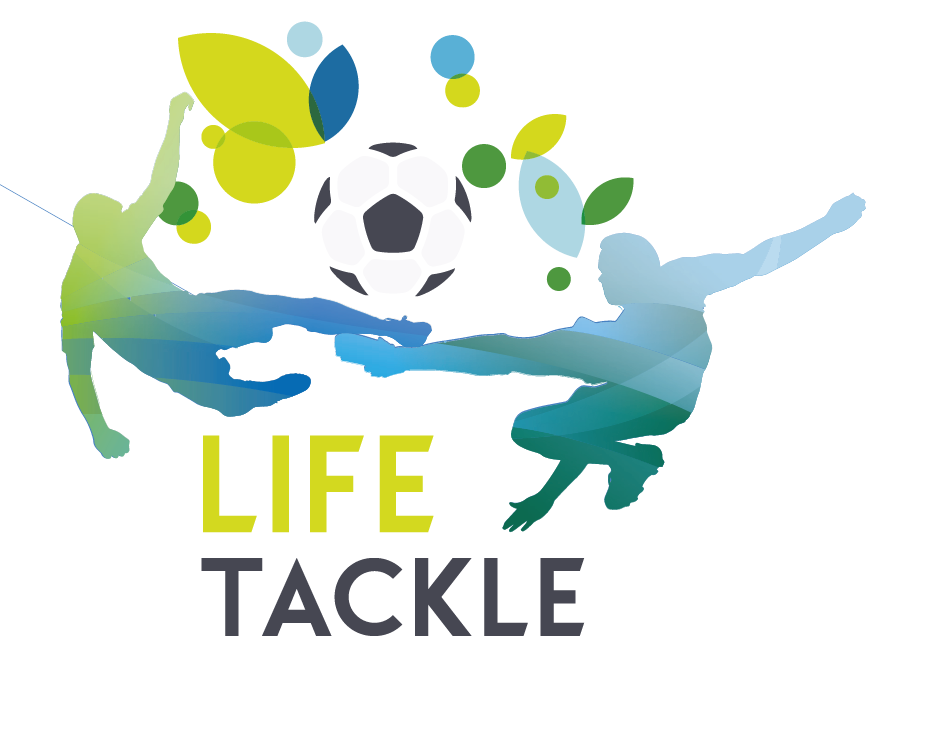And although this quickly turned out to be a hoax (the European Commission never intended such a general ban), the issue of greening football pitches was never really settled.
Synthetic turf is criticised for being potentially harmful to people and the environment. It usually contains rubber granules that are used as infill material and fall into the category of controversial microplastics. Besides, the particles are not biodegradable as they become smaller and smaller throughout their lives and are carried by wind, weather and footwear from the pitch out into the environment, where humans and animals absorb them.
According to European Commission estimates, tens of thousands of tons of microplastics could be released every year from the approximately 51,000 football pitches in the EU that are covered with synthetic turf.
In Germany, there are approximately 6,000 sports and football pitches covered with synthetic turf, according to a 2018 study by the Fraunhofer Institute. They are the fifth-largest source of microplastics in the country, the study claims. And that raises health issues.
Far-reaching socioeconomic consequences
“We still do not have sufficient knowledge about the health effects of microplastics on humans,” explained Peter Simpson, senior scientific officer at the European Chemicals Agency, ECHA.
The Helsinki-based EU agency is currently working on the study, which media reports claimed was aimed at banning artificial turf.
“We are currently investigating whether to restrict products to which microplastics are deliberately added. These include not only infill materials for football turf but also cosmetics, household and industrial cleaning products,” Simpson said.
The study came at the request of the European Commission, which asked ECHA in 2018 to assess whether microplastics should be restricted as part of the EU’s new plastics strategy and what the consequences of such a ban would be.
In January last year, ECHA then presented a proposal that would prevent the release of 400,000 tonnes of microplastics within 20 years. This was followed by a public consultation to check the practical feasibility of the proposal.
“We had to get an idea of what the alternatives for these products were, as well as what socio-economic consequences such a restriction could have,” explained Simpson, a chemist by training.
But even as ECHA continued to conduct its review, there was resistance among sporting associations and municipalities.
In Germany, a working group was set up to deal with the issue. It consisted of representatives of the German Olympic Sports Confederation, the German Football Association and the scientific community, called for a transitional period “of at least six years”. Their conclusion was that anything else would mean a disproportionate effort and costs for clubs.
Ban would be “economically insane”
Harald Nonn, Chairman of the German Lawn Society, knows more about football pitch greening than almost anyone else. And he is also of the opinion that “a general ban on existing synthetic turf would be economically insane”.
Usually, Nonn always advocates natural turf: it is healthier and is proven to be much better for the environment. “Especially in cities, I would like to see more natural turf. It is more pleasant because it binds heat, CO2, dust and precipitation,” he says.
But he says artificial turf may be justified in some cases, particularly on pitches that are used very often. Besides, using real grass also comes with its own problems. That is because its maintenance is costly and requires the occasional use of fungicides in large stadiums to prevent fungal growth. On top of that, natural grass also needs a lot of light and is therefore artificially lit in many pitches in winter. This means a “massive use of energy,” said Nonn.
Should a club decide to use plastic turf, there are more environmentally friendly alternatives to rubber granules, he said. Cork or hemp, for example, are other viable alternatives but they are also expensive the expert notes.
But the European football association UEFA says this is not yet a practicable solution. These filling materials are “neither feasible nor sustainable” due to their costs, it argues.
The EU Chemicals Agency, therefore, points out that the first priority must be to prevent the microplastics from being released into the environment. This can be achieved in part by very simple means: a grid in the ground, a fence or the sewage channel at the edge of the playing field are sufficient to catch the particles.
“ECHA has never intended to ban artificial turf,” Simpson said. “We are aware that this would have enormous socio-economic consequences,” he explained.
The proposal is now being discussed by the agency’s scientific committees and an opinion will be submitted to the EU Commission in summer 2020. If Council and Parliament agree, the new regulation could come into force in 2021.
[Edited by Frédéric Simon]















Follow our journey